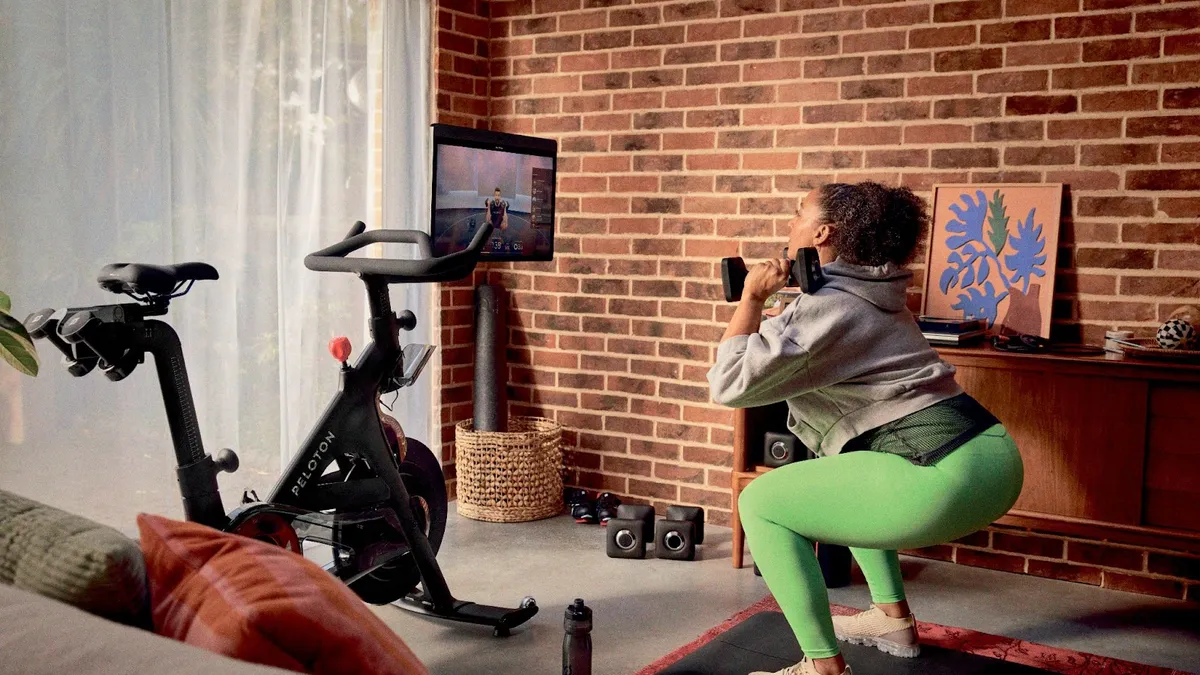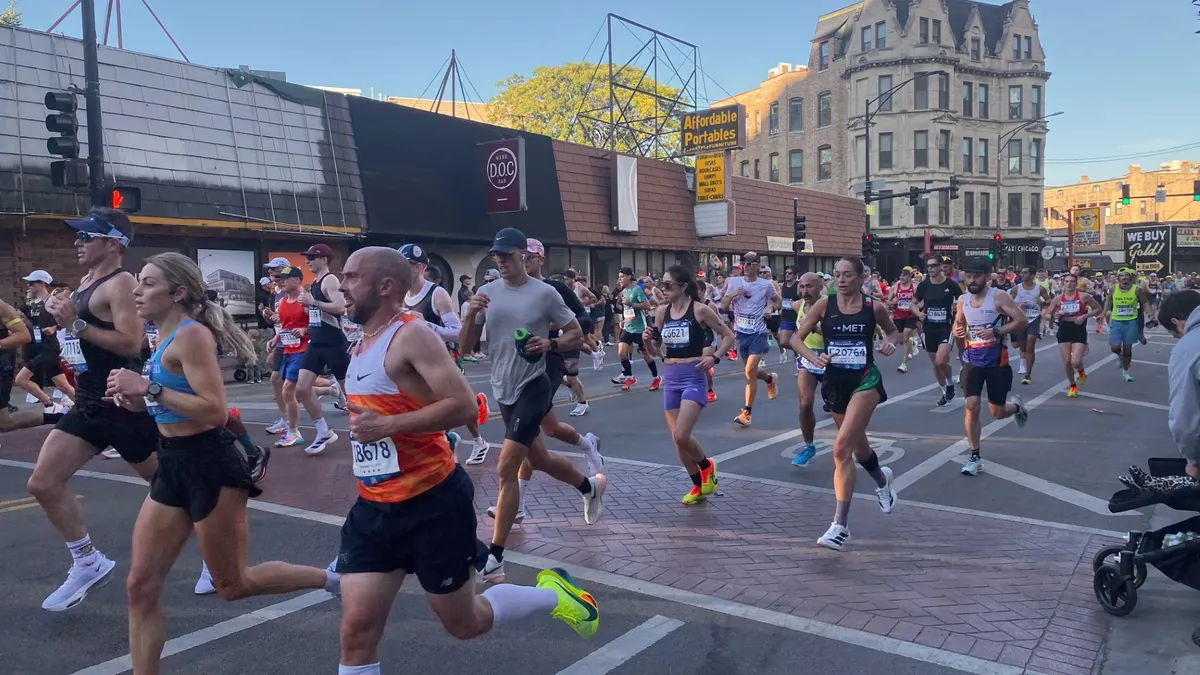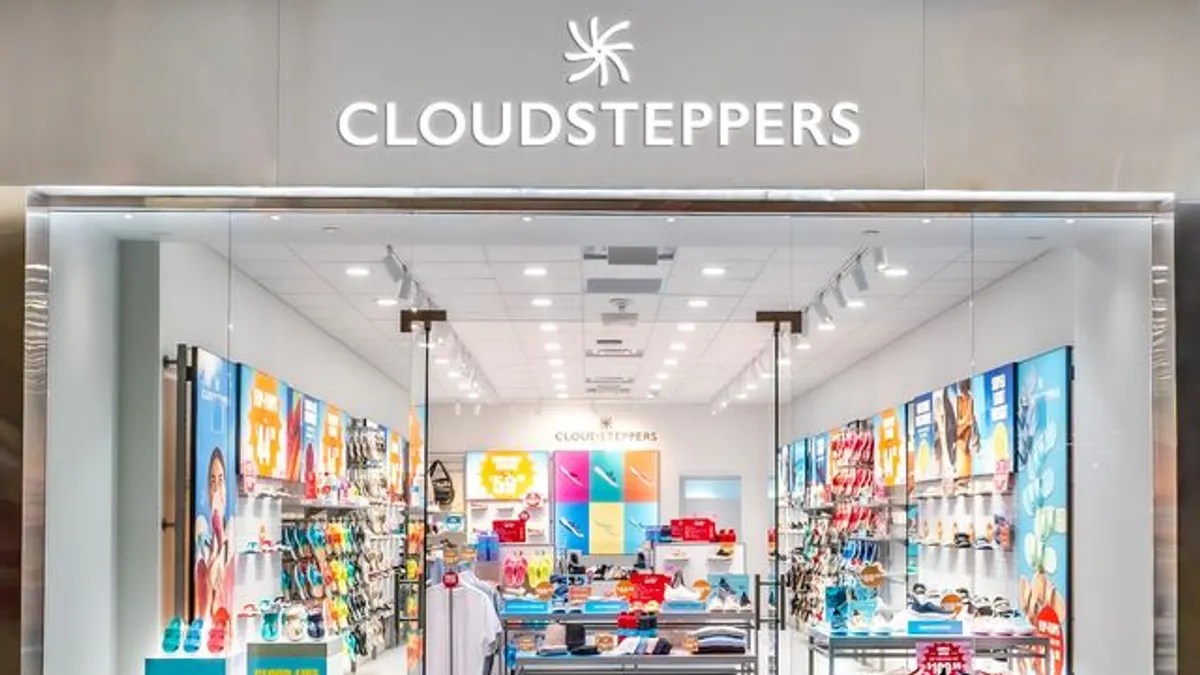When it comes to fitness ads, some images have become staples — high intensity, seamlessly executed workouts and the perfectly placed bead of sweat. While great for turning up the drama, such imagery runs the risk of stoking intimidation among those looking to be more active. Peloton, for its latest brand refresh, decided to flip the script, seeking inspiration from real customers to celebrate an array of body shapes, fitness levels, imperfections and even the “wobbly bits,” according to Director of Marketing Oli Snoddy.
The brand refresh and a new creative campaign, both unveiled in May, are framed around an “anyone, anywhere” ethos, marking a strategic pivot away from Peloton’s typical hardware-focused advertising. The move arrived as the embattled brand works to regain relevancy following a pandemic boom. Accordingly, messaging is meant to address the misconception that Peloton is only a bike company, Snoddy said, while dually making it known that the brand is well-suited for everyone, no matter where they are in their fitness journey.
“In the simplest possible terms, this was really just anchoring into who Peloton already was,” the exec said. “I actually think a lot of the best refreshes often have that trait, as opposed to trying to be something different — it’s just telling your truthful story in a more compelling way.”
So far, the push is showing signs of a potential payoff. In a letter to shareholders around Peloton’s fiscal fourth quarter earnings, reported Aug. 23, CEO Barry McCarthy called out the refresh as a high-point in an otherwise gloomy period, noting early success in the effort for shifting brand perceptions among audiences including Gen Z and those early in their fitness journeys. Additionally, the company saw an increase in downloads of its Peloton App, a major focus of the refresh, among a range of audiences including men, Gen Z, Black and Hispanic customers.
“We know shifting consumer perception and behavior takes time, but we’re pleased with the progress we’ve already made,” wrote McCarthy in the letter to shareholders.
Still, there’s more work to do. The company, in its earnings, reported signs of ongoing challenges, with revenue falling 5% year over year to $642.1 million and a 29,000 quarter over quarter loss in subscribers. The period, which McCarthy had anticipated would be one of Peloton’s most challenging for growth, took an extra hit from a recall on the seat posts for the Peloton Bike announced in May that cost the brand an additional $40 million. However, while an “anyone, anywhere” ethos is sensible for business broadly, the reasoning for Peloton’s refresh was fueled by more specific drivers, Snoddy said.
“It’s more the long-term business ambition around the app and just telling the truthful story of our members,” the exec explained.
Riding on a feeling
While making an impression on a broad range of consumers could be viewed as complex, the core of Peloton’s creative strategy for its refresh was rooted in a simple question: How does Peloton make people feel? To field an authentic response, the brand’s key ingredient was the use of its real members, which were recruited through an open casting call on social media to be utilized in branding efforts.
The brand also launched its refresh campaign with a 90-second anthem spot featuring a wide range of cast members, some of who were also real Peloton members, working out in a slew of locations, from an outdoor run to an at-home workout navigated while holding a baby to an off-grid weighted routine outside an RV. Workouts are seen powered through the Peloton App, which is showcased as cast members navigate various categories of activities, whether it be yoga, walking or classic gym workouts. The brand sought to capture more authentic energy with the help of Ricardo Jones of production company Stink Films.
“I think a lot of fitness brands are focused on showing people on hardware — obviously it's very hard to actually communicate how that feels.” Snoddy said. “A lot of the creative in different ways was focused on trying to bring that to life.”
The refresh and campaign were devised alongside creative studio Stink Studios, which handled global creative in collaboration with Peloton’s internal creative team, while brand expression was handled in collaboration with Mother Design and Uncommon Creative Studio. The integrated campaign first launched in the U.S. and Canada spanning TV, over-the-top, paid social, creator partnerships and more, though it has also been modified for other markets, including the U.K. Of the feedback offered following the effort’s unveiling, Snoddy said the consensus is that the messaging is spot on.
“Regardless of numbers, it matters what stakeholders think about it, whether it be members, instructors, employees, because this is more than an ad,” Snoddy said. “The immediate reaction was very much, ‘This is how it feels.’”
As Peloton’s refresh shows signs of resonating with a wider audience, the move is also angling to offer a major boost for the brand’s app, an offering that, at the time of the refresh, only had around a 3% to 4% awareness, Snoddy said, with some members being totally unaware of its existence. Since the reintroduction — which also came as the brand announced a handful of new app features, including more free content — the app has gained around 900,000 new downloads, and over 600,000 of those have come from non-members.
The refresh was also unveiled months after the arrival of Peloton’s new CMO, Leslie Berland, who most recently served as CMO of X, formerly Twitter, before leaving days after Elon Musk took ownership of the platform. While planning a refresh soon after the naming of a new chief marketer could spell chaos, Berland and Snoddy previously worked together, including for then-Twitter, and went through similar experiences in their time working for other companies, Snoddy said. As such, Peloton’s new chief marketer was able to pick up on ideas by the team that were already germinating and carry them through.
“Leslie came and has just been this catalyst basically to sharpen those thoughts, beat them up, galvanize the company — all of the tough things, frankly,” Snoddy said.
Beyond its campaign spot, additional creative elements help bring home Peloton’s feeling-driven approach. For example, the brand on Instagram is featuring its real members, like Rebecca Russ, a new mother finding a postpartum routine, and Karen Gorham, an individual finding her fit while living with a prosthetic limb, with animated photos showing them before and after their workouts.
Peloton also plans to layer in a stronger focus on its instructors — which it has centered its marketing around in the past — for a new spot slated to arrive later this month. The forthcoming spot is intended to again mark a shift by the brand by steering away from traditional tactics around marketing its instructors, which typically would entail seeing them through the screen of a bike, to find a new way to capture their energy.
“It’s very much an evolution of the spot in May,” Snoddy said. “Again, the emphasis is on taking what’s real and finding a better way to communicate that feeling.”
























